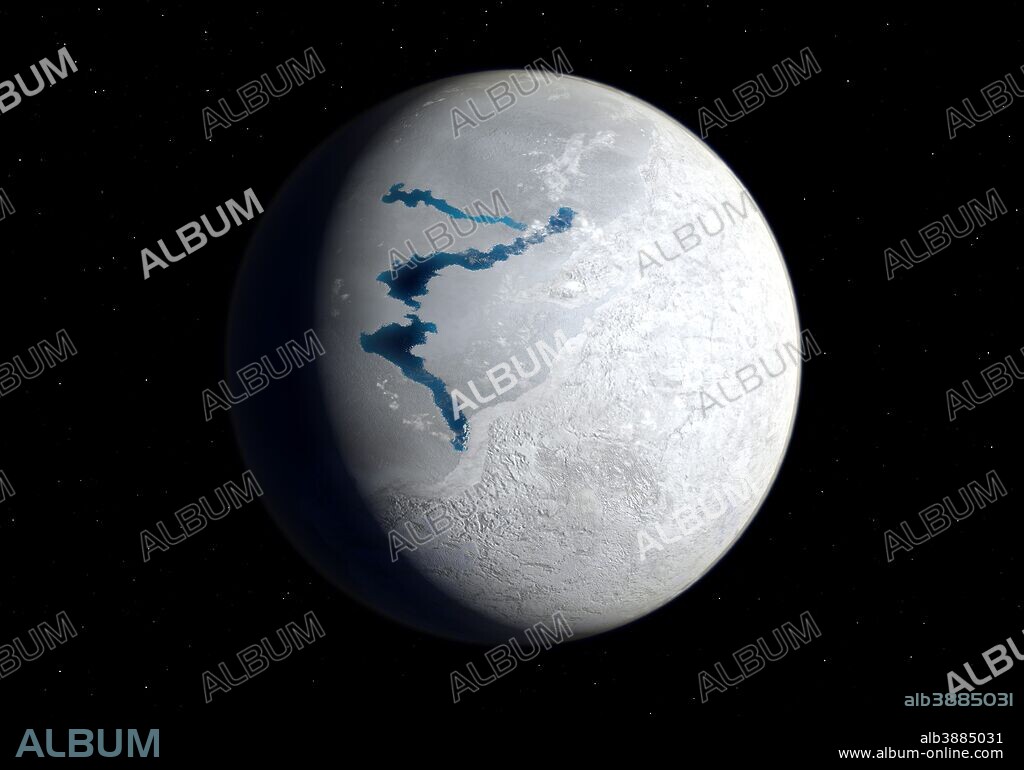alb3885031
View of Earth 650 million years ago during the Marinoan glaciation.

|
Añadir a otro lightbox |
|
Añadir a otro lightbox |



¿Ya tienes cuenta? Iniciar sesión
¿No tienes cuenta? Regístrate
Compra esta imagen.
Selecciona el uso:

Título:
View of Earth 650 million years ago during the Marinoan glaciation.
Descripción:
Ver traducción automática
This is how the Earth may have appeared about 650 million years ago during a period when snow and ice may have covered most, if not all, of the Earth's surface and oceans. This image suggests the Earth's appearance during the Marinoan glaciation from 650 to 630 million years ago. The southern and eastern hemispheres are dominated by glacier-covered land masses while the opposing hemisphere is frozen ocean save for a few areas of exposed liquid water, AKA refugia for the Earth's surviving soft-bodied multicellular organisms.. . In addition to the Marinoan glaciation there may have been at least two, and possibly three previous Proterozoic glacial periods going back to two billion years ago. The causes of these snowball periods are unknown but may have been due to massive volcanic eruptions, massive meteoritic impacts (both resulting in global sun-reflecting ash clouds), or variance's in the Earth's orbit.
Crédito:
Album / Stocktrek Images / Walter Myers
Autorizaciones:
Tamaño imagen:
5000 x 3500 px | 50.1 MB
Tamaño impresión:
42.3 x 29.6 cm | 16.7 x 11.7 in (300 dpi)
Palabras clave:
ACCIDENTE GEOGRAFICO • ACCIDENTES GEOGRÁFICOS • ASTRONOMIA • BLANCO • CALENTAMIENTO GLOBAL • CIENCIA DE LA TIERRA • CIENCIA • CIENCIAS NATURALES • CONGELADO • CONTINENTE • EPOCA PREHISTORICA • ESPACIAL • ESPACIALES • ESPACIO • EVOLUCION • FALLO • FLOTA • GEOGRAFÍA FÍSICA • GEOGRAFIA • GEOLOGIA • GLACIACIÓN • GLACIAR • GLACIOLOGÍA • GLOBO • HEMISFERIO ORIENTAL • HIELO • HISTORIA NATURAL • HISTORIA • HORIZONTAL • IMAGEN EN COLOR • INICIOS • MAR • MARINA • MARINE • NATURALEZA • NIEVE • OCEANO • ORIGEN • PASADO • PERIODO GLACIAL • PLANETA TIERRA • PLANETA • REDONDO • SEA • SISTEMA SOLAR • SOLO OBJETO • SOMBREOR • TEMPERATURA FRÍA • TODO


 Pinterest
Pinterest Twitter
Twitter Facebook
Facebook Copiar enlace
Copiar enlace Email
Email
